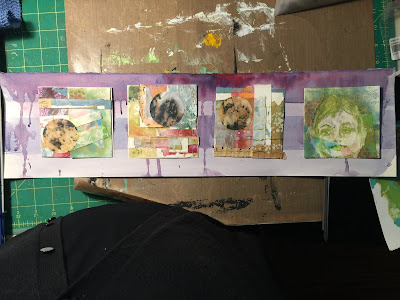Our backyard has changed again.
The deer and their babies have arrived in our neighborhood. They seek shelter from the heat in our backyard. At first, the little ones where so new that they trembled when standing still and scampered about from one side of the yard to the other without fear.
They have already grown taller and more cautious. They follow their mother as she jumps our low fence into the backyard. They chase each other up the hill; but when they come down, they hesitate for a long time before they sail over the fence.
 |
| All photos by Bill Slavin |
Last summer we planted two trees at the top of the hill to hide a neighbor's new structure from our view. The deer found the trees a treat and nibbled the leaves from about four feet down to the ground. We put plastic fencing around the trees to try to keep the deer away from the trees. Over the winter, the fence sagged and separated so that there was an opening into the trees. We hadn't had time to fix the fence before the deer discovered the opening. We watched as the mother walked inside with her two babies and settled down for their afternoon nap. Inside the fencing. We looked at each other and laughed.
 |
| by Bill Slavin |
While we ate our lunch on the deck, two more deer came into the yard and proceeded up the hill, munching on the bushes along the way. Suddenly we heard a din of scrambling and crashing noises. The two new deer flew down the hill chased by the mother. The interlopers kept trying to advance up the hill but the mother would have none of it. She staked out her territory well. Eventually, the two disappointed deer leaped over the fence for greener pastures.
Meanwhile, we keep our eyes on the birds. The chickadees alternate between our bird feeder and the bird house we put up. We can hear the peeping of new babies within. We watch parents fly in and out of the house so fast it's hard to see them. We hear the adult chickadees chattering loudly. We see why. A cowbird hops around our porch and investigates old nests in hopes of dropping an egg to be tended by another bird. No such luck for her this year. The junkos in the front yard lost their brood to a crow. Sometimes bullies win, sometimes they don't. We admire the determination of the little birds and the mama deer to keep their families safe. Territory matters, a safe home matters, defending yourself matters.


























